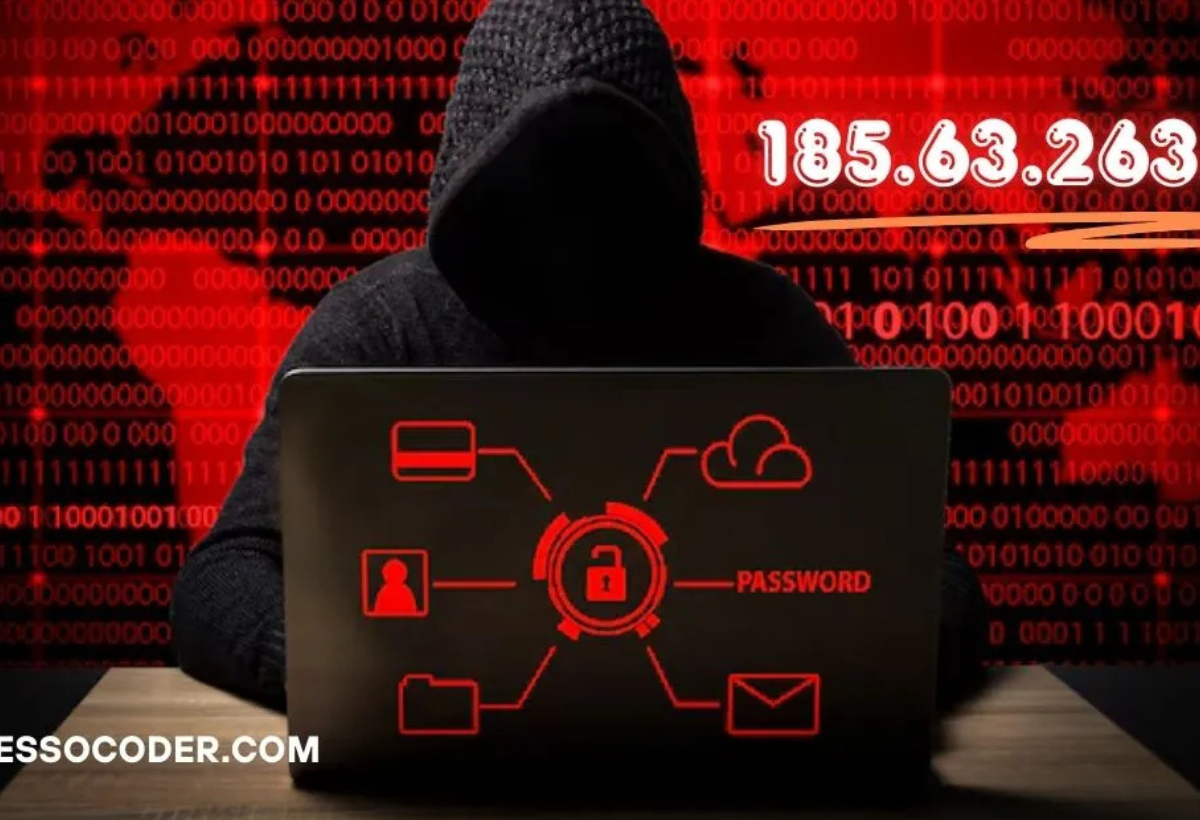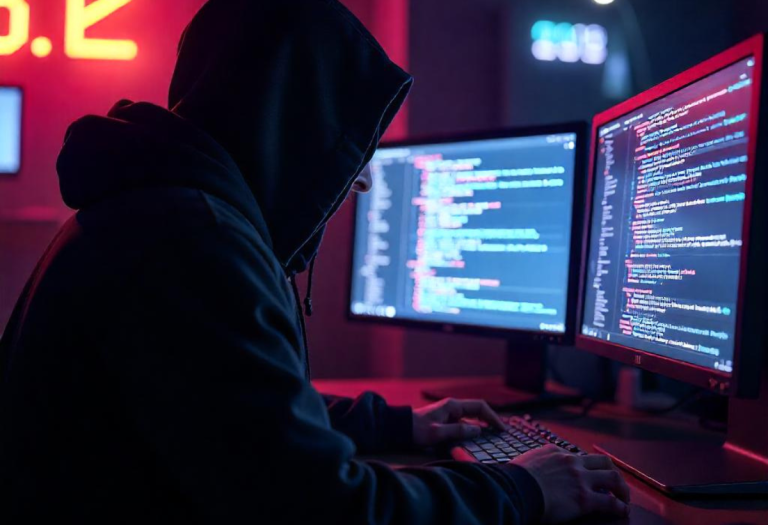185.63.263.20: The Mysterious IP That’s Stirring the Cybersecurity World
Understanding 185.63.263.20 and Its Significance
In the vast universe of the Internet Protocol (IP), every address tells a story—some mundane, others mysterious. One such enigma is 185.63.263.20, a string that resembles a standard IPv4 address but breaks the rules. Its presence in network logs has sparked curiosity and concern across the digital landscape.
The IP 185.63.263.20 has become the center of attention in forums like Tosnosh.com and cybersecurity communities. Despite its apparent structure, it’s technically invalid due to the third octet (263) exceeding the maximum allowable value of 255. This single anomaly transforms it from a routine identifier into a subject of widespread investigation and caution.
What is 185.63.263.20?
At a glance, 185.63.263.20 looks like a legitimate IP address. It adheres to the four-octet structure defined by the IPv4 protocol, where each segment ranges from 0 to 255. However, the value 263 in the third octet breaches this range, making it an invalid IP address.
This invalidity means 185.63.263.20 cannot route traffic, belong to any Internet Service Provider (ISP), or be used in legitimate communication. Yet, this doesn’t prevent it from appearing in web server logs, triggering alarms in intrusion detection systems (IDS), and puzzling cybersecurity experts.
Why Is 185.63.263.20 Trending?
So why the buzz around a non-existent IP? The short answer: it keeps showing up where it shouldn’t. System administrators and users have reported suspicious activity, including failed login attempts and unusual traffic patterns tied to this address.
This anomaly hints at deeper cybersecurity risks. Whether due to typos, faulty scripts, or intentional IP spoofing, 185.63.263.20 is now on many security radars. Sites like Tosnosh.com are seeing rising traffic from concerned users seeking answers, making this IP a trending topic in the tech world.
The Structure of 185.63.263.20
To understand why this IP fails validation, we must dissect its IP address structure. IPs under IPv4 follow a 32-bit scheme, segmented into four octets. These octets can each range from 0 to 255—thus a value of 263 is simply out of bounds.
This violation makes 185.63.263.20 inherently flawed. In practice, no valid host or server should ever have this address. Yet its frequent appearance in logs suggests either an error in IP assignment or malicious activity designed to obscure the true source of traffic.
The Role of IP Addresses Like 185.63.263.20
Even when invalid, IP addresses like 185.63.263.20 play an indirect role in cybersecurity. When used by bots or attackers, these addresses can serve as decoys, bypassing rudimentary filters or confusing threat detection systems.
In legitimate networks, public IP addresses like 185.63.254.20 are essential for identifying servers and routing data. However, introducing fake or malformed IPs into the mix can cripple network configuration and compromise access control.
Understanding Public and Private IPs
It’s important to distinguish between public and private IP addresses. Public IPs—like 185.63.254.200—are assigned by ISPs and are visible across the internet. In contrast, private IPs are used within local networks and require NAT (Network Address Translation) to communicate externally.
185.63.263.20 is classified as a public IP due to its format, but its invalid structure removes it from usable ranges. Understanding this boundary is key to avoiding malicious traffic and ensuring proper DNS resolution.
Tracing and Locating 185.63.263.20
Tracing an IP often reveals the region, data center, or hosting provider behind it. Tools like IPinfo and IP2Location offer geolocation services to map IP addresses, though 185.63.263.20 yields no accurate results due to its invalidity.
Interestingly, addresses in the nearby IP block (e.g., 185.63.254.x) have been linked to data centers in Oregon, USA. Monitoring these ranges can help detect patterns and log anomalies that point to coordinated cyber activity.
Cybersecurity Risks Associated with 185.63.263.20
Despite being non-functional, 185.63.263.20 raises significant cybersecurity risks. Repeated appearances in firewall logs may signal:
- Brute force attacks
- DDoS attacks
- Spam and phishing attempts
- Tools bypassing security logs using IP obfuscation
Attackers might also exploit this address in proxy server chains or VPNs, masking their true origin. That’s why intrusion detection systems must flag and investigate such anomalies proactively.
How to Check if 185.63.263.20 Tried to Access Your System
If you’re concerned about 185.63.263.20 appearing in your system, begin by reviewing your firewall logs and server access logs. Search specifically for entries containing this IP or any failed authentication attempts.
Next, use online IP lookup tools like IPinfo or IP2Location to assess any valid IPs in the 185.63.x.x range. Automating these checks and correlating them with IDS alerts ensures early detection of coordinated bot activity or scripted attacks.
What to Do If You Encounter 185.63.263.20
When 185.63.263.20 shows up, take it seriously—even if it’s invalid. Add .htaccess rules to block it on Apache servers. Example:
<RequireAll>
Require all granted
Require not IP 185.63.263.20
</RequireAll>Update your security tools and ensure your firewall policies deny any malformed or spoofed IPs. Enable multi-factor authentication, use strong passwords, and conduct regular log monitoring to secure your infrastructure.
Related IP Addresses and Patterns
IPs in the 185.63.x.x range have real-world use cases, especially in web hosting and load balancing setups. However, malicious actors often use sequential IPs within a block to scan for vulnerabilities.
Examples like 185.63.254.20 or 185.63.254.200 have been seen routing through Oregon-based data centers. Monitoring the digital footprint of these related addresses helps tighten your network monitoring strategy.
Security Considerations for 185.63.263.20
An invalid IP should not be dismissed. The mere appearance of 185.63.263.20 in logs points to automated attacks, spoofed scans, or configuration errors. These are early signs of more sophisticated breaches.
Organizations should implement intrusion detection systems, enforce access control policies, and train teams to recognize unusual patterns. As recommended by the Administrator who analyzed this issue on Tosnosh.com, constant vigilance is your strongest defense.
The Transition from IPv4 to IPv6
One reason invalid addresses appear more frequently today is the exhaustion of IPv4 resources. As demand grows, networks shift toward IPv6, which offers a vastly larger pool of IPs.
Though 185.63.263.20 falls under IPv4, its misuse highlights the urgent need for secure, scalable IP assignment under the new protocol. Fortunately, most modern systems support dual-stack operation—simultaneously running IPv4 and IPv6.
Discovering the History of 185.63.263.20
While there’s no legitimate owner of 185.63.263.20, it’s important to check its activity history using public registries. Comparing timestamps and patterns can identify whether its usage aligns with known botnets or rogue applications.
Historical IP tracking can also reveal whether typos and misconfigurations are the root cause. This knowledge is vital for system admins and cybersecurity professionals aiming to build a clean digital environment.
Why Knowledge of 185.63.263.20 Matters
In a connected world, understanding every element of your network—even an invalid IP like 185.63.263.20—builds digital resilience. These identifiers impact how services are delivered, secured, and scaled.
For businesses, recognizing patterns behind IP usage supports better network configuration, customer protection, and threat response. For individuals, it nurtures cyber hygiene and safe online practices.
Conclusion
185.63.263.20 might be a fictional node in the internet’s vast landscape, but its recurring presence sends a real message: stay alert. In cybersecurity, there are no small threats—only overlooked ones.
By understanding IP structure, using reliable tools like IP2Location and IPinfo, and implementing rigorous policies, you can keep your systems robust. Let 185.63.263.20 be your call to action, not your point of compromise.
Frequently Asked Questions (FAQ)
Q: Is 185.63.263.20 a real IP address?
A: No, it is an invalid IPv4 address due to the third octet (263) exceeding the maximum of 255.
Q: Why does 185.63.263.20 appear in my logs?
A: It may result from spoofing, misconfigured scripts, or attempts to confuse intrusion detection systems.
Q: Should I block 185.63.263.20?
A: Yes. Use firewall rules or .htaccess directives to deny access from this suspicious address.
Q: How can I trace similar IPs?
A: Use tools like IPinfo, IP2Location, and online WHOIS databases to trace valid IPs within similar blocks.
Q: What is Tosnosh.com?
A: Tosnosh.com is a tech site that covers cybersecurity trends, suspicious IPs, and network analysis topics.
More Also Read:- TimesHealthMag Nutrition






